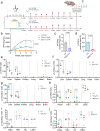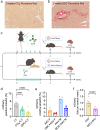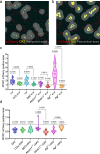Liver fibrosis negatively impacts in vivo gene transfer to murine hepatocytes
- PMID: 40064848
- PMCID: PMC11894088
- DOI: 10.1038/s41467-025-57383-8
Liver fibrosis negatively impacts in vivo gene transfer to murine hepatocytes
Abstract
Liver fibrosis occurs in several genetic and acquired disease conditions, leading to alterations of the tissue and metabolism, which may adversely affect viral vector-mediated gene therapy. Here, we assessed the impact of liver fibrosis on in vivo gene transfer to hepatocytes mediated by lentiviral vectors or adeno-associated viral vectors. We exploited two chemically induced fibrosis mouse models characterized by tissue damage in different areas of the liver lobule. Moreover, we used Abcb11-/- and Agl-/- mice, recapitulating features of inherited cholestasis and glycogen storage disease, as representative models of genetic disorders characterized by liver fibrosis. We report a general negative influence of liver fibrosis on hepatocyte transduction and alteration of the vector distribution within the liver lobule, with different outcomes according to the viral vector used and the state of the liver at the time of vector administration. This study bears implications for future developments and applications of in vivo liver-directed gene therapy.
© 2025. The Author(s).
Conflict of interest statement
Competing interests: A.C. is an inventor on patent applications submitted by Fondazione Telethon or San Raffaele Scientific Institute on LV technology for in vivo use related to the work presented in this manuscript. The remaining authors declare no competing interests.
Figures






References
MeSH terms
Substances
LinkOut - more resources
Full Text Sources
Medical
Molecular Biology Databases

